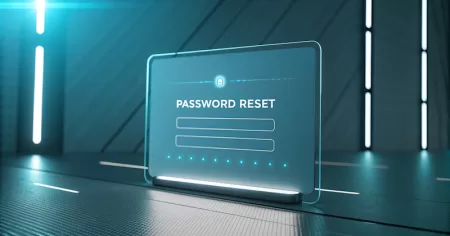Best Practices for Crafting Effective Password Reset Emails
Password reset emails are an essential part of any online platform’s security infrastructure. They play a crucial role in helping users regain access to their accounts when they forget their passwords or suspect that their account security has been compromised. However, poorly crafted password reset emails can lead to confusion, frustration, and even security risks. To ensure that your password reset emails are both user-friendly and secure, it’s important to follow best practices in their design and execution. Here’s how you can craft effective password reset emails that enhance user experience and maintain strong security standards.
- Use a Clear and Concise Subject Line
The subject line is the first thing a user will see, so it’s important to make it clear and straightforward. Avoid overly technical language or vague terms that could confuse the user or make the email look like spam. A good subject line should immediately communicate the purpose of the email, such as:
- “Password Reset Request for Your [Company] Account”
- “Instructions to Reset Your [Company] Password”
- Include a Recognizable Sender Name and Email Address
Users are more likely to trust and open an email if they recognize the sender. Use a sender name that clearly identifies your company or platform, and ensure that the email address is from a legitimate domain associated with your brand. For example:
- Sender Name: “[Company] Support Team”
- Email Address: “support@yourcompany.com”
- Personalize the Email
Whenever possible, personalize the email by addressing the user by name. This adds a layer of familiarity and reduces the likelihood that the email will be mistaken for phishing. For example:
- “Hi [User’s First Name],”
This small touch can enhance user trust and engagement.
- Provide Clear Instructions
The main purpose of a password reset email is to guide the user through the process of resetting their password. Ensure that your instructions are simple and easy to follow. Break down the steps into clear, numbered instructions, and avoid using technical jargon. For example:
- Click the button below to reset your password.
- You’ll be directed to our website, where you can enter a new password.
- Once you’ve chosen a new password, click “Submit” to save your changes.
- Include a Prominent Call-to-Action Button
Make it easy for users to take action by including a clear and prominent call-to-action (CTA) button in your email. The button should stand out visually, using a color that contrasts with the rest of the email. The text on the button should be direct and action-oriented, such as:
- “Reset Your Password”
- “Create a New Password”
- Set a Time Limit for the Password Reset Link
For added security, password reset links should expire after a certain period. This minimizes the risk of someone else using the link if it falls into the wrong hands. Be sure to inform users of the time limit in the email, for example:
- “This link will expire in 30 minutes.”
- “Please complete your password reset within 1 hour.”
- Provide Contact Information for Support
Not all users will successfully reset their passwords on the first try. Make sure to include a way for them to contact support if they encounter issues. This can be a direct link to a help center, a support email, or a phone number:
- “If you need further assistance, please contact our support team at support@yourcompany.com.”
- Warn Against Phishing and Security Risks
To help users recognize potential phishing attacks, include a brief note about security. Remind them that your company will never ask for their password via email and that they should only reset their password using the official link provided. For example:
- “For your security, please do not share your password with anyone. We will never ask you to provide your password via email.”
- Ensure Mobile-Friendliness
Many users will open their password reset emails on mobile devices, so it’s crucial that your email is responsive and easy to navigate on smaller screens. Use a simple layout, large fonts, and a CTA button that is easy to tap on a mobile device.
- Test and Optimize
Finally, always test your password reset emails before sending them to ensure that they display correctly on all devices and email clients. Consider conducting A/B testing to determine which subject lines, CTA buttons, and layouts are most effective. Use analytics to track open rates, click-through rates, and completion rates to continuously improve your email strategy.
Conclusion
Crafting effective password reset emails is about more than just providing a link to reset a password—it’s about ensuring a seamless, secure, and user-friendly experience. By following these best practices, you can help your users regain access to their accounts quickly and confidently, while also reinforcing your platform’s commitment to security.
At Treasure Web Designs, we understand the importance of every interaction between your brand and your users. Whether it’s a password issue email or a complete website overhaul, we’re here to help you create a secure and effective digital experience. Contact us today to learn how we can support your business’s online success.

